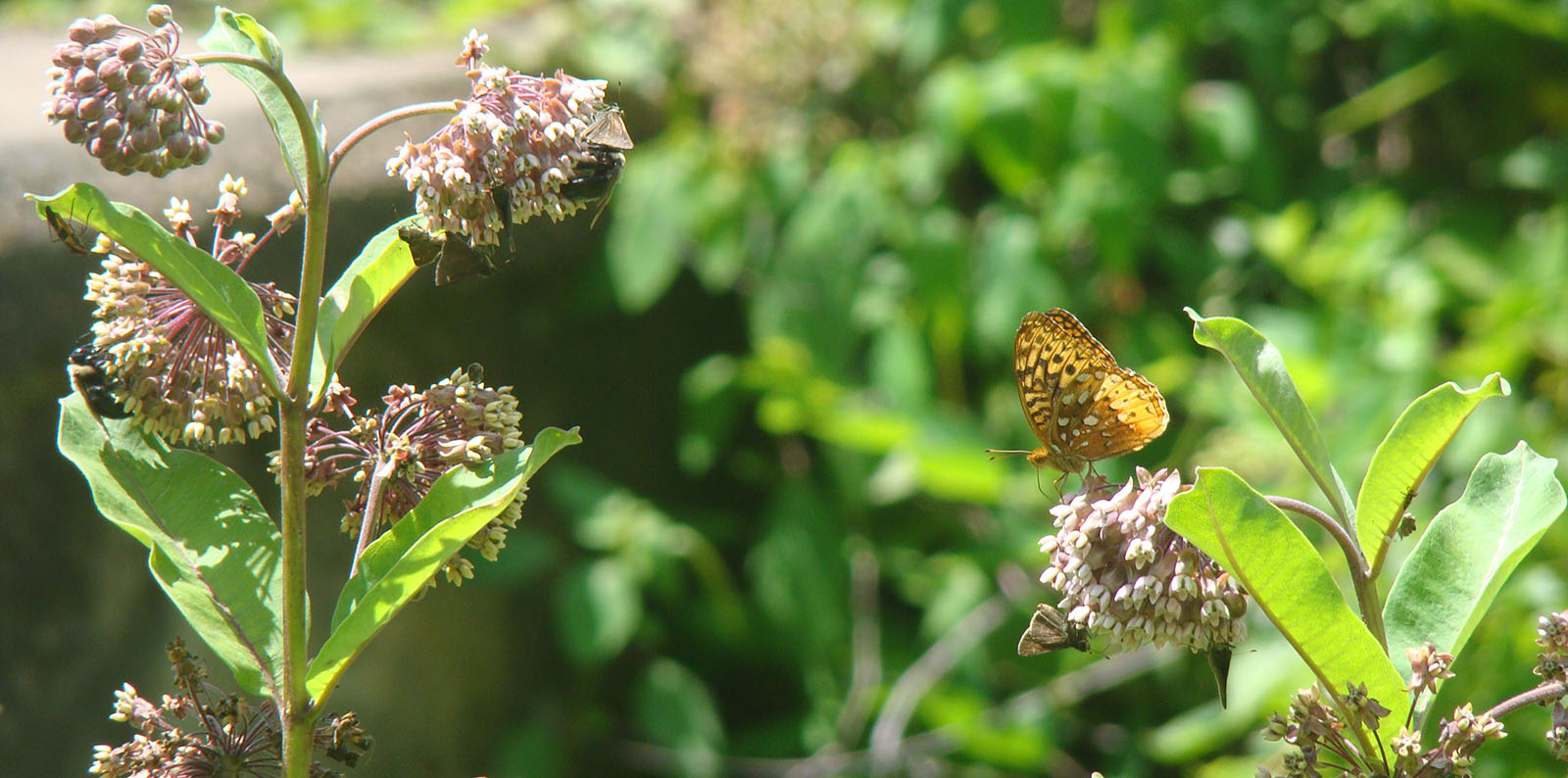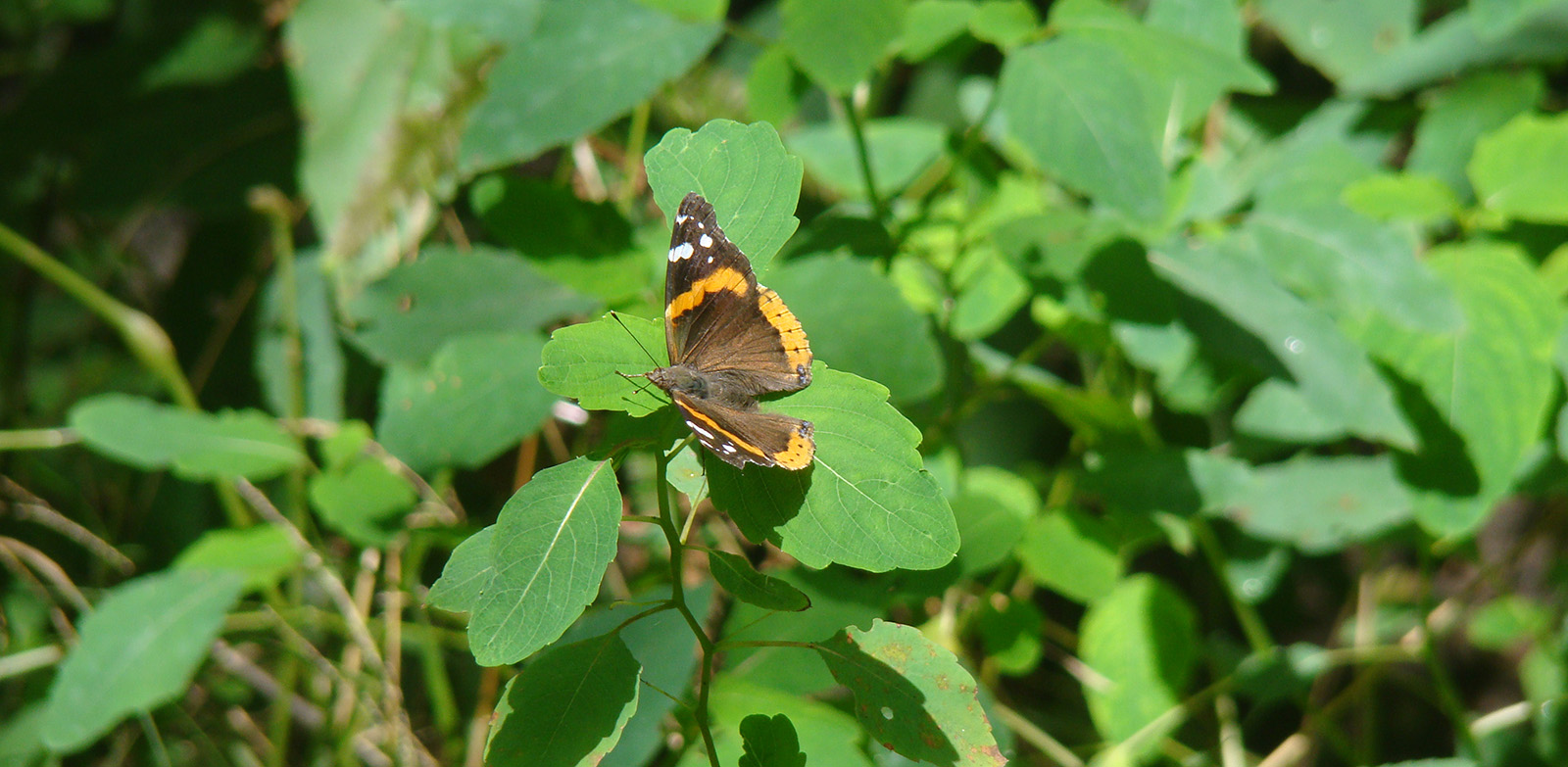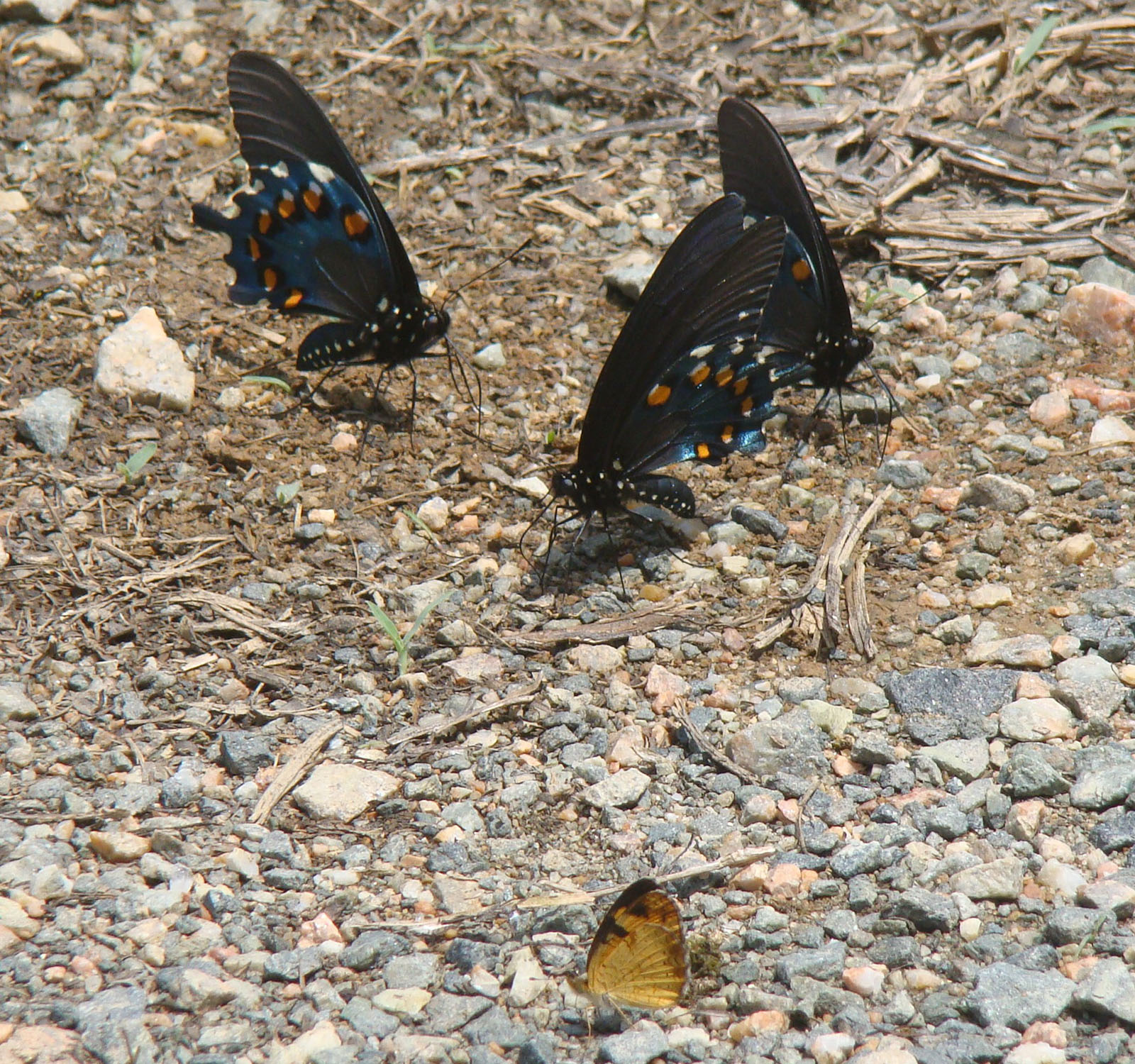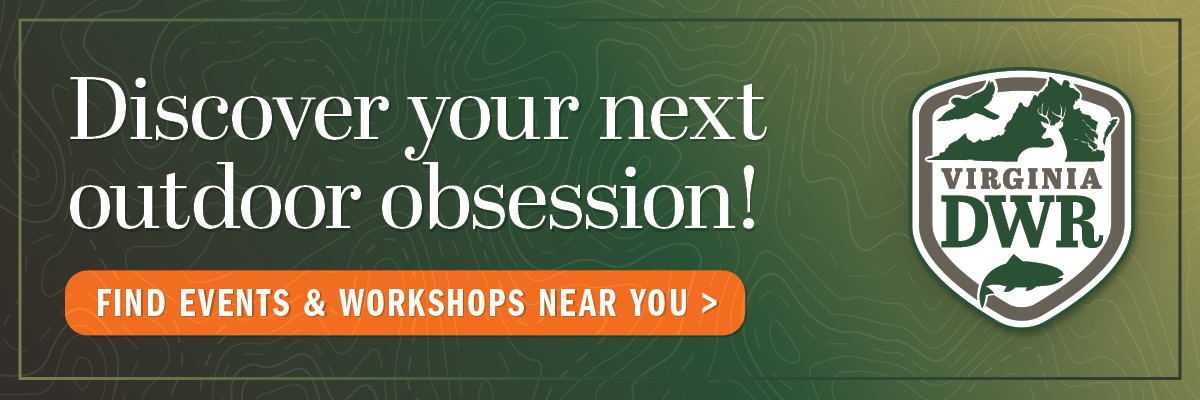By Andrea Naccarato/DWR
Photos by Andrea Naccarato/DWR
You would probably have to talk to a lot of people before finding someone who doesn’t like butterflies. The sight of those colorful wings floating through our gardens or favorite parks can be captivating. Butterflies are well loved, but why spend time counting them?

How many butterflies can you count in this photo? Hint: Some of them are small, brown skippers!
Keeping track of the number of butterflies in a preserve, garden, or other appropriate habitat is like conducting a check-up on the habitat itself. For example, if a preserve’s butterfly count reported 1,000 butterflies one year and only 10 butterflies the next year, there may have been a major change within the preserve that not only impacted the butterflies, but possibly other wildlife species, too. Recording and analyzing long-term trends in butterfly population counts can help land managers make good decisions for all the species under their care.
The Clifton Institute in Warrenton, Virginia has organized butterfly counts for more than 20 years. The Institute’s Managing Director, Dr. Eleanor Harris, explains the importance of doing annual butterfly counts. “The only way we can tell if species are in trouble is by monitoring them over long periods of time,” said Harris. “Every year is a little different, and sometimes a species has a low year for one reason or another (maybe it’s slightly cooler than normal, or its host plant got zapped by a late frost, or a field where they usually hang out got mowed too early). But by collecting data for year after year, decade after decade, we can see whether what we’re seeing is an anomaly or a trend.”
In addition to informing conservation management actions, butterfly counts are fun and educational activities for nature enthusiasts at all levels of experience. “I enjoy counting butterflies because they are a window into our natural world,” said Mike Smith, who compiles two butterfly counts in Virginia. “Butterflies come in [an] amazing variety of colors and patterns—some cryptic, some gaudy, but all fascinating.”

One butterfly that exemplifies fascinating wing colors and patterns is the common buckeye. Photo by Elizabeth Fedorko
Besides the awe-inspiring beauty of butterflies, people tend to appreciate the following characteristics that make butterflies relatively easy to observe:
- Since butterflies are cold-blooded (or “ectothermic”), the sun must be high enough in the sky to warm their bodies before they take flight. For this reason, most butterfly activity happens between late morning and early afternoon. No need for butterfly watchers to get up early or stay out late!
- Butterflies hide if it’s rainy, overcast, or too windy. Plus, many species are not active if it’s colder than about 60 degrees F. That means butterfly watchers get to stay home if the weather is less than ideal.
- In general, butterflies (especially the larger species) are not shy about flying and visiting flowers with people watching from a few feet away. Butterfly watchers can chat with each other without disturbing the butterflies’ behavior. Just make sure you don’t block the butterfly’s sun with your shadow!
What are some tips for noticing and identifying butterflies in the wild?
Butterfly counts are usually a hands-off activity, meaning butterflies are not captured in order to make identifications. (However, butterflies may choose to briefly land on you, especially if you are wearing a bright-colored shirt!) So, how does one find and identify butterflies in the wild?
- Rely on your sense of vision to notice butterflies moving in the environment. (Most butterflies don’t make any sounds that humans can hear.)
- Look for color in motion. Practice following the butterfly with your eyes until it settles.
- Early in the day (especially in cooler temperatures), check the tops of leaves for butterflies basking in the sun.
- Scan the tops of flowers for butterflies seeking nectar.
- Look down in the grass as you are walking. Your footsteps might stir up smaller species resting in low vegetation.
- Don’t forget to look up! Butterflies may perch in the tree canopy or fly over your head.
- If you see a known butterfly host plant (such as milkweed for monarchs), it may be worth your time to observe it for a few minutes in case any female butterflies pay a visit.
- Check moist patches of soil or dirt roads where some butterflies gather, a behavior known as “puddling.”
- Use close-focusing binoculars for small species or typical birding binoculars to see butterflies farther away.

Although this plant is not blooming, butterflies like the red admiral may use a leaf as a convenient resting or basking site.
How to identify butterfly species:
- Carry a lightweight field guide for reference photos, identification tips, typical habitats, host plants, unique behaviors, and other hints. Butterfly field guides are often organized by family, but some are arranged by the butterfly’s dominant wing color. (See a list of several field guides below).
- Narrow down the possibilities by estimating the butterfly’s wingspan. Larger species, like swallowtails, have up to four-inch wingspans. Many skippers, blues, and hairstreaks have wingspans of roughly one inch.
- Pay attention to butterfly wing colors and patterns. Remember, the wings may look very different on top versus underneath. Good field guides point out unique wing patterns on their butterfly photos or illustrations.
- A butterfly’s flight pattern or other quirky behaviors may help with identification. Such information may be included in a “Behavior” or “Comments” section of your field guide.
- Observing a butterfly laying eggs on its host plant may provide clues to species identification, especially if only one or a few butterfly species have been documented to use that particular host plant. (Of course, being familiar with native plants in your region helps with this strategy!) Detailed host plant information for your area may be included in regional field guides.
- Take pictures or short videos so you can compare your sightings with photos in your field guide or websites/apps with butterfly photos (see Resources below).
- Consult with your fellow butterfly watchers who may have more experience observing certain species.

This gathering of pipevine swallowtails (background) and one pearl crescent (foreground) demonstrates the relative sizes of different butterfly species. The pearl crescent is about the size of a quarter.
Learn some identification tips for five Virginia butterflies in the first article of this series: An Introduction to Virginia’s Butterflies.
What is it like to do a butterfly count?
Butterfly counts are often community science efforts composed of amateur naturalists, photographers, and other people who enjoy seeing butterflies. Smith volunteers to organize butterfly counts in Shenandoah National Park and east Rockingham County; he emphasized how welcoming the counts are to newcomers. “I like enlisting an amazing group of volunteers,” he said. “Some are beginners, some very knowledgeable about butterflies. All ages and levels of experience are welcome. Younger counters are usually the first to spot a butterfly.”
To someone thinking about volunteering for their first butterfly count, Harris would say: “The butterfly count is a long hot day in the sun, but when you see your first meadow fritillary of the day or your first juniper hairstreak, it makes it all worth it. Even if you don’t know how to identify a lot of butterflies, it’s always helpful to have another set of eyes to point out a butterfly fluttering in the distance. And the only way to learn is to get out there and practice.”
Each park, preserve, or region usually conducts its butterfly count close to the same date every summer to ensure consistency in data collection. If the count is registered with the North American Butterfly Association (NABA), groups of butterfly surveyors search appropriate habitats for about six hours within a 15-mile diameter. Volunteers are encouraged to participate for as much of the day as they have available.

Butterfly count participants search riparian (riverside) habitat within their survey region.
Every group is provided with a species checklist and data sheet to record the number of individual butterflies seen. Many count organizers also provide butterfly identification training a few weeks before the count so volunteers can study or refresh their memories. Some regions even produce customized field guides for count participants.
Surveyors may carpool between a variety of sites, such as trails within nature preserves, parks, botanical gardens, residential properties, farms, or even roadsides lined with wildflowers. (The count organizer obtains permission for the group to visit all the sites.) Participants search carefully, carrying their field guides, always looking for butterflies. A single person may be the first to see a butterfly and call the rest of the group over to get consensus on the butterfly species. Photographers take pictures to help with any tricky identifications.
If there are not any official butterfly counts happening in your region, you can still explore your favorite outdoor space and look for butterflies. In fact, observations from individuals are even more important in regions that lack long-term butterfly counts. The crucial step is to share your sightings with conservation organizations that gather this information.
How you can get involved
The North American Butterfly Association (NABA) organizes butterfly counts across the United States. This nonprofit organization includes 23 chapters within 14 states. Although there are currently no NABA chapters in Virginia, there are still opportunities to participate in butterfly counts. In fact, there are approximately 15 butterfly counts planned each year across the Commonwealth, from Alexandria to the Great Dismal Swamp. Find the butterfly count nearest you by visiting NABA’s Counts Map. Contact information for each count compiler is listed here, too.
Signing up for an existing butterfly count is often as simple as sending an email to the count compiler, who will later send you all the details about the upcoming count.
Whether you are participating in a NABA count circle or observing butterflies on your own, your sightings and photographs can be shared on digital platforms like iNaturalist (including a Virginia Department of Wildlife Resources project, called Virginia Wildlife Mapping), eButterfly, or NABA’s “Recent Sightings” page. Additional organizations with long-term butterfly monitoring projects are listed under Resources.

Even if you don’t know the name of a butterfly you photographed, you can share your observation on a community science website, like iNaturalist, and get help with identification.
The collective sightings from volunteer butterfly counts and amateur naturalists provide much more information across a wider landscape and timeframe than would be possible for biologists to accomplish alone. Colleges and conservation organizations may request access to the long-term data sets to investigate questions about butterfly communities, such as any changes to species compositions, population sizes, or shifts in active flight periods. As more people share information about their butterfly sightings, a clearer view of butterfly population dynamics and potential conservation actions comes into focus.
Read the first article from this series: An Introduction to Virginia’s Butterflies
______________________________________________________________________________
Andrea Naccarato is the DWR Outreach Production Assistant. During her first summer living in Virginia, she participated in eight butterfly counts that ranged from the Coastal Plain to the Blue Ridge.
Resources
Books/Field Guides:
Butterflies of the East Coast, An Observer’s Guide, by Rick Cech and Guy Tudor. 2005. Princeton University Press, Princeton, NJ.
Butterflies of the Eastern Chesapeake: Maryland, Virginia & Delaware, Pamphlet by Arlene Ripley. 2017. Quick Reference Publishing, Inc. Pocket-size & waterproof.
Butterflies of the Mid-Atlantic States, Pamphlet by Arlene Ripley. 2018. Quick Reference Publishing, Inc. Pocket-size & waterproof.
Butterflies of the Mid-Atlantic: A Field Guide, by Robert Blakney & Judy Gallagher. Independently published.
Websites:
Atlas of Rare Butterflies, Skippers, Moths, Dragonflies & Damselflies of Virginia
Audubon Society of Northern Virginia
Butterflies and Moths of North America
Coastal Virginia Wildlife Observatory
DCR Natural Heritage Inventory


